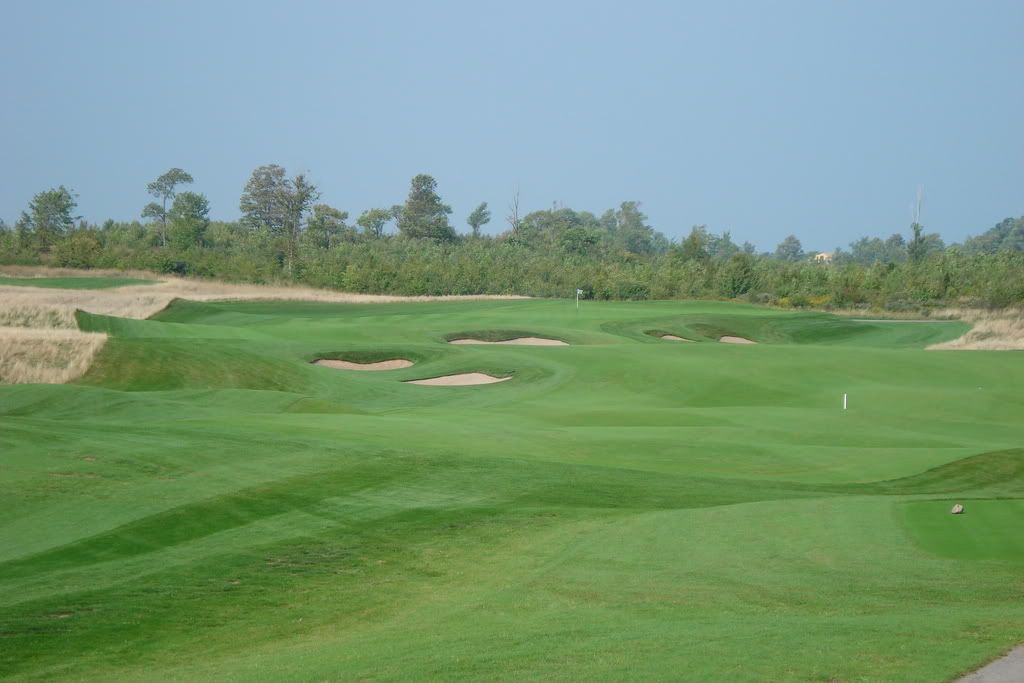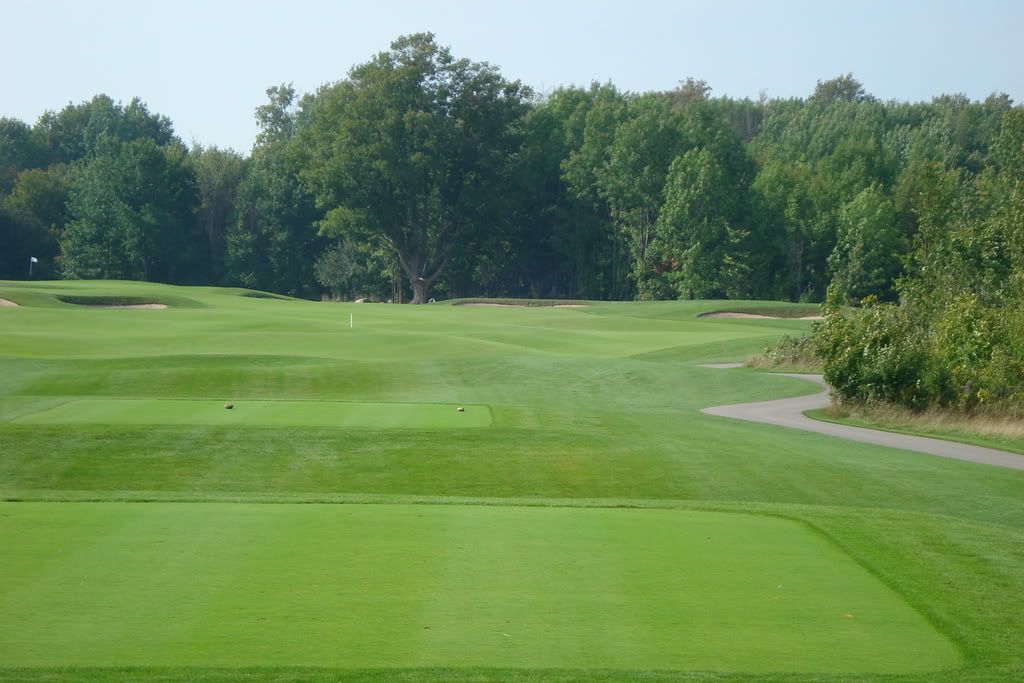Mike,
Not sure it was the back tee. Maybe one forward from the back.
Interestingly, I don't think that I noticed the green appearing to sit on the ridge. I think the telephoto lens helps to see it in the picture. It's 550 yards away, so I think it might be easy to miss if you weren't really looking and knew where to look. I agree it's a neat look.
The green is definitely lifted although there was no need to create an illusion of a ridge. There is a ridge behind the green where the bushes are. It lead down to a lower level where there is a Redan-like par 3 at right angles to this hole. If the bushes behind the green were removed the green could be perched on a natural ridge there, but perhaps it might have created erosion problems or been an environmental thing.
On my one round, I played down the fairway on the second. Delayed gratification sounds like a description I might use in the future to describe my strategy. In reality the hole is too long for me to realistically get home in two. But it was really fun to watch the ball bound down the fairway between the bunkers. My only concern would be that the bottom of the swales in the second LZ are likely to get marked up over time. The majority are likely to end up in a relatively few swales.
Not sure about your question on the fairways; do you mean the rolling mounds and swales or the bunkering. If it is the mounds and swales, the concept is fairly faithfully carried out throughout the course. I have not seen it on other Carrick courses I've played; or on many other courses on this side of the pond. Reminded me of Machrihanish and Royal Aberdeen.
Here are pics of the second and fifth holes where you can see the continuity of the bounding fairway concept.


If by trying too hard you mean the lifted green, I assume that was to protect par from long hitters. Certainly a green site that was low and continued the fairway and ran away like Oakmont would also have been a nice design touch.